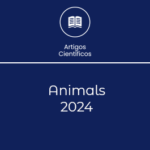The objective of this study was to describe the housing system in the hospital pens on growing and finishing
(GF) pig farms. This work was developed by using a questionnaire and was conducted between January and April, 2016.
Forty-four GF commercial farms (a total of 41,111 animals) were involved, seeking to raise issues concerning the facilities of
the hospital pens, environment, management, feeding and the reasons for transferring the animals to these accommodations.
About 98% of the evaluated farms had, at least, one hospital pen. Most of these farms presented a percentage of animals
evaluated (PAE) in the infirmary, of less than 1.5% of the total capacity of the animal housing on the farm. In 93.48% of the
farms, the criterion used to transfer the animals to the infirmaries was when they were identified as “impaired, hurt, suffering”.
In 47.83% of the cases, there were no differences between the hospital and common pens regarding the general management of
the animals. The facilities and environment characteristics were similar in almost all hospital pens. Respiratory problems were
the main reason for transferring pigs from the common to hospital pens. Under the conditions of this study, sufficient hospital
pens exist on farms and overcrowding or competition for resources among pigs are avoided. However, there is no established
standard among respondents about where to place the recovered animals.
Environment, facilities, and management of hospital pens in growing and finishing pig farms: a descriptive study

Conheça nossas redes sociais:





